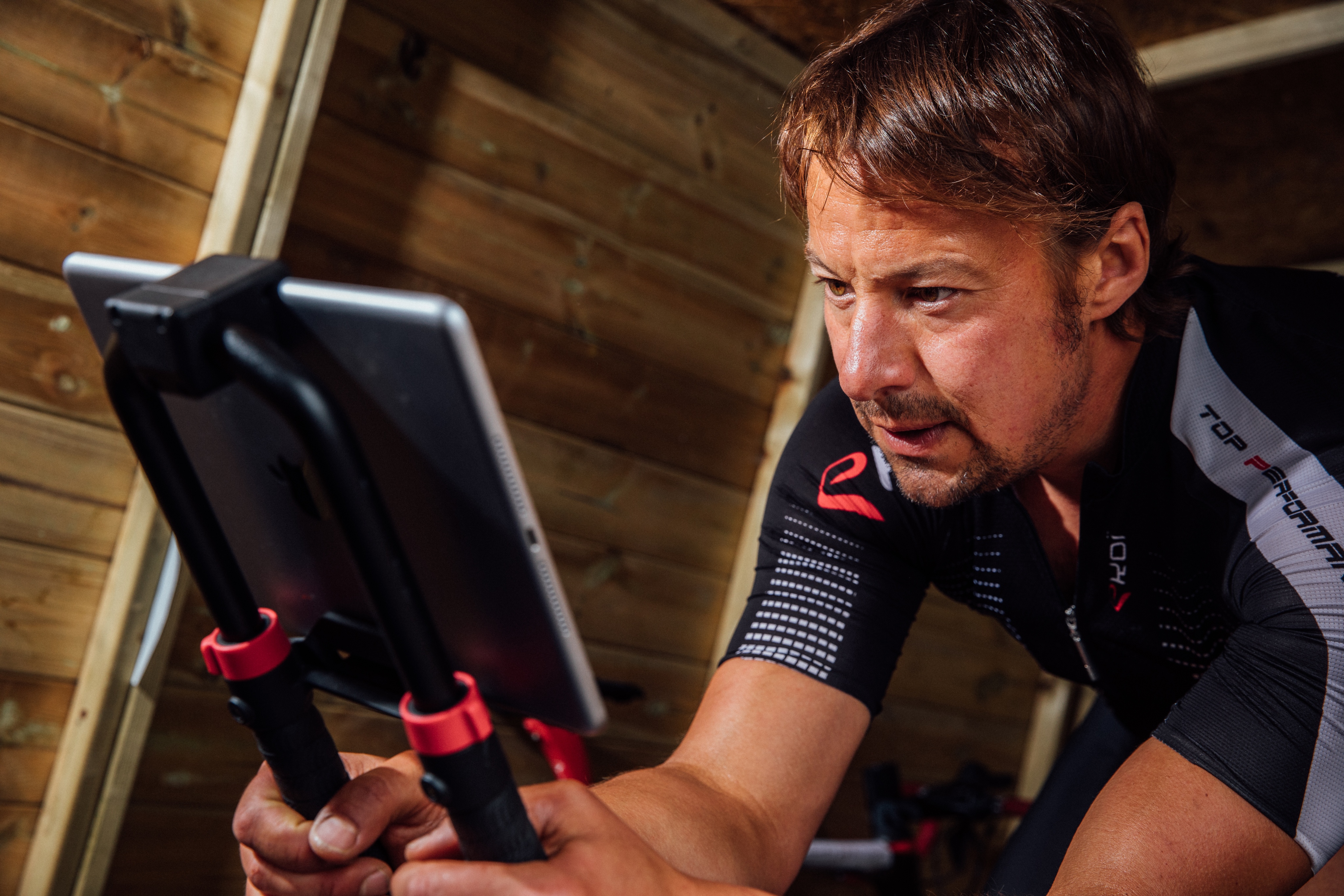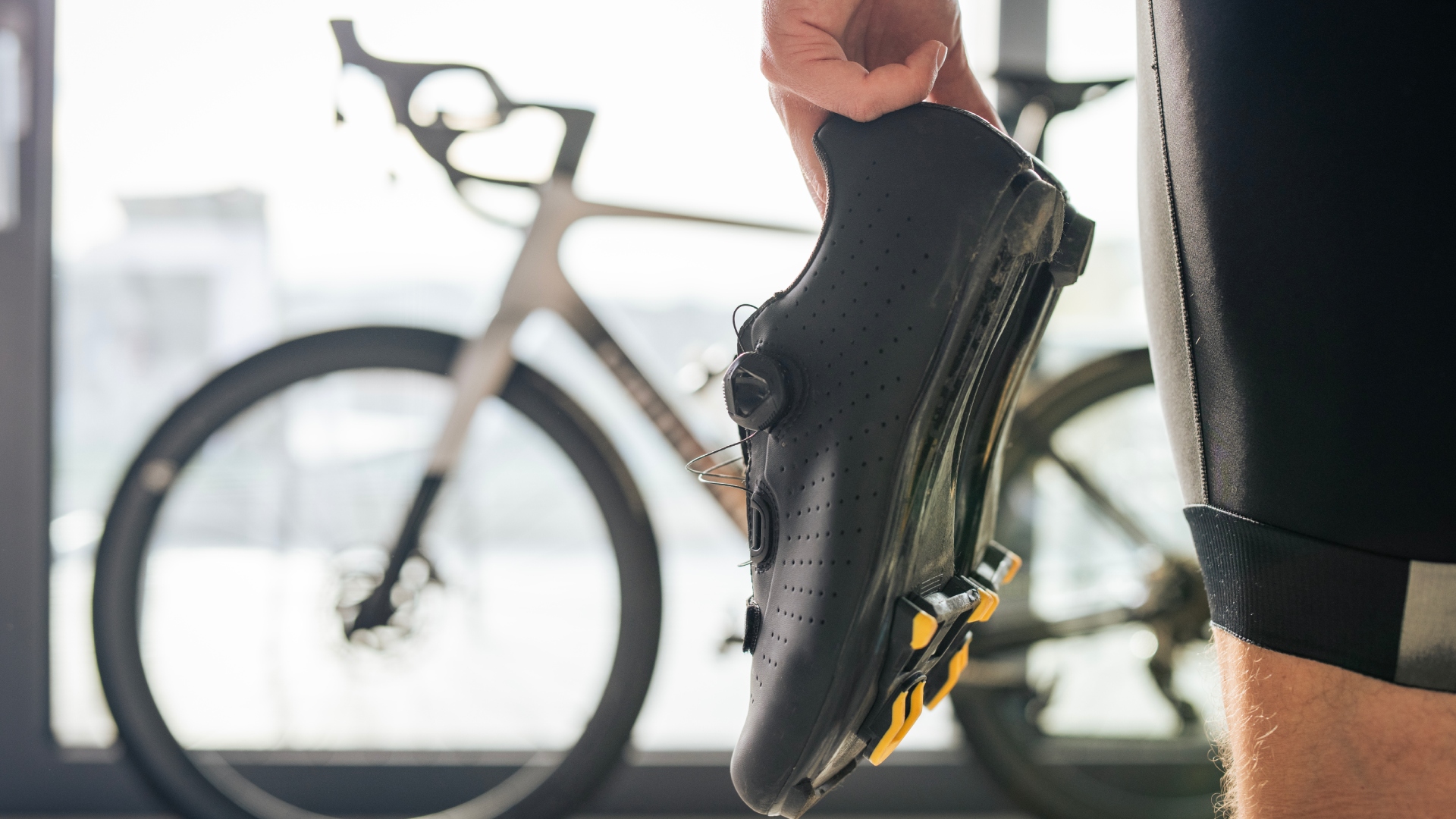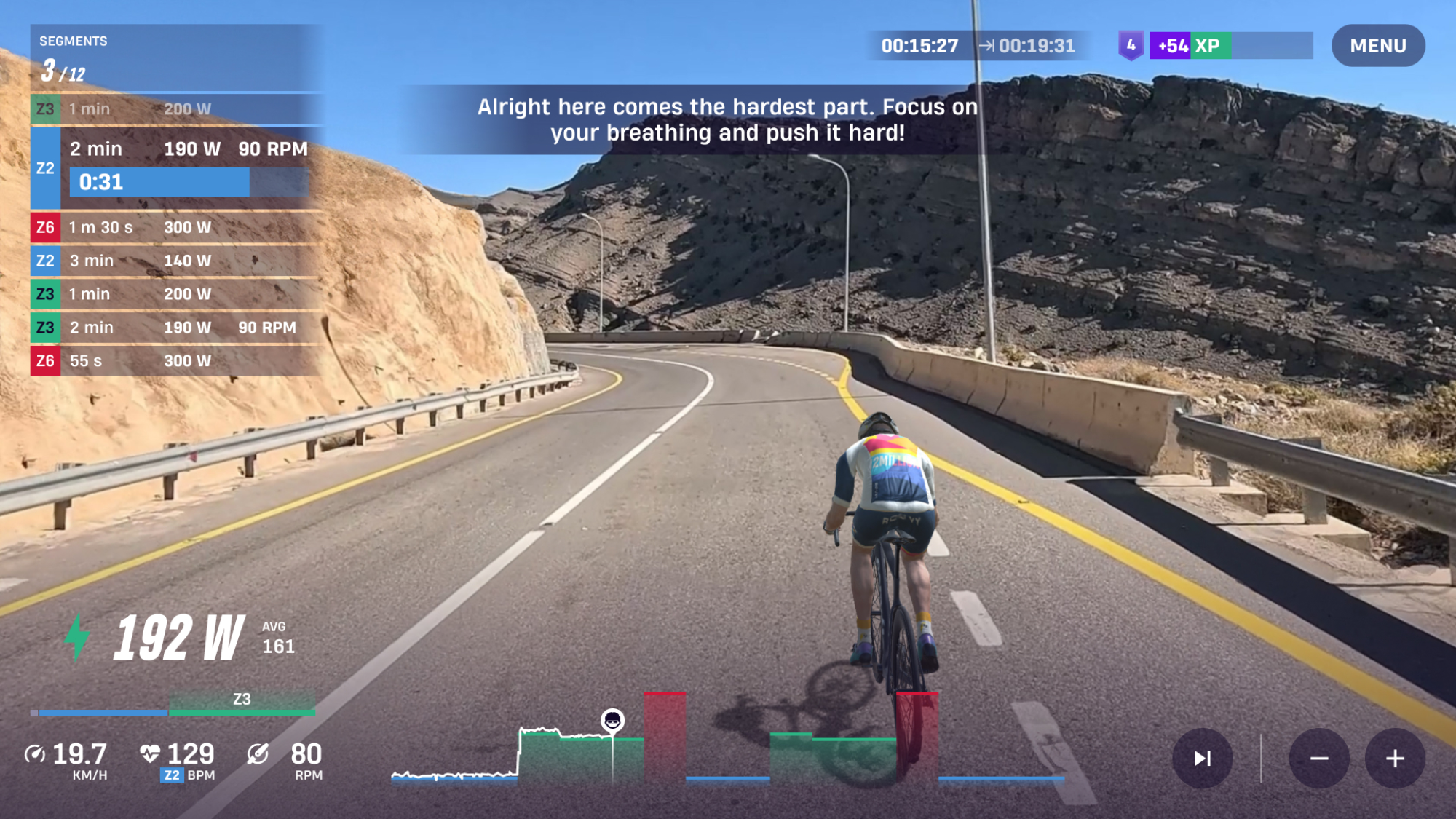I tried every FTP test to find out which is the most accurate
Functional threshold power is a prized benchmark – but which test is the most accurate? Steve Shrubsall tries them all

This Christmas I decided the best way to celebrate the birth of Jesus Christ was to inflict a large amount of pain on my person by doing five different FTP (functional threshold power) tests. This would not only atone for any seasonal gluttony but would resolve a bone of contention that has been dogging cycling for the past 25 years: which test is the best?
By definition, FTP is the power a cyclist can sustain for an hour. Once you have ascertained this figure, it can be used to calculate your cycling training zones and then create a cycling training plan to improve your fitness. The amount of power you can sustain for 60 minutes is determined by metabolic efficiency – your body’s ability to turn fuel into energy – and corresponds to lactate levels. Pedal too hard for too long and your body’s engine room runs into trouble: it can’t shovel coal fast enough. Fatigue rapidly sets in, and it’s goodnight Vienna. The amount of power you can hold for a relatively long time – an hour, specifically – is therefore an important benchmark.
Having sought advice from some of the sport’s leading authorities on field testing: former WorldTour rider and coach at Thighsclub.com Alex Dowsett, coach Chris Carmichael, and domestic racer Andy Critchlow, I slipped away from a Boxing Day game of Scrabble, pulled on a pair of bibshorts and waddled with trepidation towards the shed.
WHY FTP TEST ACCURACY MATTERS
An accurate FTP reading allows you to train in specific cycling training zones at the correct intensity. Training at too low an intensity sells your performance short, while training at too high a power could lead to burnout or even injury. Here’s how to calculate your zones based on FTP:
| Zone | Intensity | % FTP |
| Zone 1 | Active Recovery | Row 1 - Cell 2 |
| Zone 2 | Endurance | 55-75 |
| Zone 3 | Tempo | 76-87 |
| NA | Sweetspot | 88-94 |
| Zone 4 | Threshold | 95-105 |
| Zone 5 | V02 Max | 106-120 |
Pacing: Knowing your zones allows a clearer understanding of how to pace efforts and races over varying times and distances.
Progress tracking: Provided it’s re-tested every four to six weeks, FTP is a great barometer of fitness.
Lactate training: Training at threshold improves the body’s ability to shuttle lactate, using it more efficiently as an additional fuel, meaning hydrogen ions accumulate more slowly (it’s the latter that are thought to cause pain).
Get The Leadout Newsletter
The latest race content, interviews, features, reviews and expert buying guides, direct to your inbox!
TEST 1 THE HOUR OF POWER

ALEX DOWSETT SAYS: For the majority of people, truly emptying the tank at a uniform pace over an hour – especially if you’re doing it indoors – is possibly one of the most psychologically demanding things you can do on a bike.
MY TEST: Embarking on an hour all-out may seem like a daunting prospect, but here’s the thing: you settle in to a sustainable pace quite easily. Perhaps too easily. The biggest danger is not blowing up but selling yourself short. Mindful that my 20-minute best was 370 watts, I attempted to dwell within a 10-watt window between 330-340 for the duration. Mentally breaking the hour into four 15-minute sections, the plan was to set a solid foundation in the first and second blocks, limit inevitable damage during the third, and spend the final block simply trying not to die. The pain began to manifest in earnest at around the 28-minute mark as I tried to tell myself ‘Ah good, only 32 minutes left’ while secretly hoping that a kindly gust of wind would rip the shed down from around me. I finished the hour of power with an output of 335 watts, having hit a max heart rate of 189bpm. I was reasonably pleased, but the fact I was able to stick to the parameters I’d set myself prior to the test suggested that I could’ve perhaps gone out a little harder. There was no experimentation here – I set a number and stuck to it, which was possibly not best practice when the aim was to rid myself of every available morsel of energy.
RESULTING FTP: 335 WATTS
TEST 2 THE RAMP TEST
ALEX DOWSETT SAYS: This is the easy one. Think of it as five minutes easy, 10 minutes uncomfortable, and five minutes disgusting. Make sure you empty the tank. The more you want it, the better your result…
MY TEST: The ramp test was the one I was least afraid of – but that’s not to say I was looking forward to it. While the hour of power can be billed categorically as a slow-burner, the ramp test sits at the other end of the spectrum. One minute you’re turning the pedals without a care in the world, the next you’re throwing up pieces of your right lung. It’s a test that very much favours those with high-end oomph. It’s short, sharp and tends to produce flattering results, hence its popularity.
The ramp test begins in a deviously unassuming fashion at just 100 watts, the power increasing in increments of 20 watts every minute until your body and mind throw in the towel. Your FTP is measured by taking the highest one-minute power reached – AKA your maximal aerobic power (MAP) – and multiplying it by 0.75. This calculation does produce discrepancies between riders, but it’s widely used among coaches and on training platforms for a quick means of ascertaining the allimportant figure.
My ramp test lasted just over 22 minutes (including a five-minute warm-up). Minutes 18-20 found me in uncharted territory at over 400 watts, trying to trick my brain into believing that, despite the dribble, this was sustainable. During minutes 21-22 ‘mind over matter’ no longer applied – I’d no mind left. My brain had buggered off halfway through the 440s and I was relying on muscle memory to get the job done. Finally, 460 watts and out.
This produced an FTP figure of 348 watts – 12W higher than my hour of power. Could I really sustain 348 for an hour? I’d have to find out. But first I had two more tests to complete.
RESULTING FTP: 348 WATTS
TEST 3: 20 MINUTES ALL-OUT

DOWSETT SAYS: If you get the first five minutes right, the next 15 minutes look after themselves. Start out at your previous FTP result and gauge your form – then you can push above it, if you’re on a good day.
MY TEST: Probably the most popular way of estimating FTP, the 20-minute test has been haunting training calendars since circa 2010. It’s quick and it’s practical, yes, but it should also be in the dock at The Hague for crimes against humanity. This is the big one, to my mind, the test that yields the most discomfort. Designed as a means of truncating the hour test, the 20-minute test’s power is multiplied by 0.95 to calculate FTP.
Something quite extraordinary happens when you’re undertaking an FTP test over this duration. The rules governing the space-time continuum become distorted; a minute no longer comprises 60 seconds, it now has carte blanche to last for as long as it damn well pleases. I took this negativity – nay, concern – into the third test of the series.
Eleven minutes in and I’d managed to settle on a wattage of 380 that, while eliciting a profoundly furrowed brow, was just about manageable. I lived here now – in a burning hot bedsit with the devil knocking on the door. The second hand ticked by with all the urgency of a narcoleptic slug, but 18 minutes materialised and a glimmer of hope began to play on the virtual horizon. The end was in sight. It was time to empty the tank.
With an average power of 379 watts, I hauled myself out of the saddle, winding the power up to 382. This yielded, after deducting 5%, an FTP of 363 – and a large gulp as I realised the bar had been raised significantly, with another test to go.
RESULTING FTP: 363 WATTS
TEST 4 2X 8 MINUTES
CHRIS CARMICHAEL SAYS: This is a test you can schedule in relatively easily without a long taper. Do it after a day or two of easy riding. As the athlete gains more aerobic conditioning, the gap between the first and the second eight minutes starts coming down.
MY TEST: The last of our tests is perhaps the least orthodox. A good warm-up is followed by two blocks of eight minutes separated by a 10-minute rest. The aim of the two times eight minutes is to have nothing left in the tank after each effort. The first should be completed as if the second didn’t exist; no muscle fibre should be spared. The second interval should be as close as possible – in terms of effort and power – to the first. FTP is calculated by finding your average power for the two tests and multiplying by 0.9. This test suits those with a high anaerobic threshold – puncheurs, crit racers and cyclocross specialists. I do not boast the credentials of any of the above and I set off on my first excursion into the unknown with trepidation.
My tactics for this test were simple: head down, watts up. Eight minutes isn’t that long – let’s go bonkers! I didn’t look at power or time for at least four minutes. However, when a quick glance up showed that only 28 seconds had elapsed, it quickly became apparent it was going to be one of those days. I closed my eyes and tried to find a happy place. For a couple of seconds, I was on a beach in St Lucia sipping a Singapore Sling, but then a northeasterly gust rattled the window and I was back in a cold shed smashing out eight minutes at 415 watts. The jubilation of completing such a task was short-lived because 10 minutes later I was back at the coal face counting down the minutes, watching my heart rate soar and readying myself for another hateful eight. I mustered 385 watts for the second interval and was greeted with my latest FTP calculation.
RESULTING FTP: 360 WATTS
The results
FTP STATS THAT MIGHT SURPRISE
450 watts: the estimated FTP of Tadej Pogacar (6.8W/kg)
80-85%: FTP as a percentage of VO2 max
323 watts: reported FTP of Olympic champion Kristen Faulkner (5.2W/kg)
1-2%: annual decline in FTP after age 40, unless doggedly maintained
4.6-5.3W/kg: FTP ranged rated ‘excellent’ for amateur men, according to the famous Andy Coggan chart
4.1-4.7W/kg: FTP range rated ‘excellent’ for amateur women
So the results were in: 335, 348, 363 and 360 watts respectively. In the best case scenario, I would be able to sustain 363, the highest figure, for a full hour. It was time to find out. Had mental weakness held me back on that first ‘hour of power’? Could I really improve it by nearly 30 watts?
I rested – well, actively recovered – for two days prior to what, on paper, bore all the hallmarks of a thoroughly rotten evening in the shed. My mind wandered back to my first hour of power when I’d ridden on a knife-edge at 335 watts through sweat, tears and wild-eyed desperation. As for having to repeat it, my brain had pixelated that particular piece of information – I just refused to think about it. Until now.
With a target of 360 watts, I took a deep breath and engaged my power meter in what would become our most bloody battle yet. We exchanged blows relentlessly for the duration, but a final volley of high-torque hooks floored my nemesis and I walked away from my second hour of power having averaged 358 watts (equating to 4.0W/kg). The war was over and I’d managed to claim some territory.
Consistency rules

So, the question is, which test is best? Or rather, which one elicits the figure closest to genuine best hour power while requiring a much shorter duration of pain? For my money, the ‘two times eight minute’ test takes top honours – my result of 360 watts turned out to be just two watts above my final hour of power. That’s impressive accuracy for a test with only 16 minutes of effort. That said, you do of course need to be fully committed to squeezing out your best possible power during each eight-minute interval, especially the tougher second one.
The ‘hour of power’ guarantees you’ll discover your genuine hour power but, as I proved, it is relatively tricky to pace and may require multiple attempts. The traditional 20-minute test takes second place and is highly commended for producing a figure only five watts higher than my genuine hour effort. The main takeaway is that all these tests are tough, and you need to go into them with determination. You are stronger than you think! Once you’ve decided on your test, that’s the one to stick to for the year, ensuring consistency across your re-tests. Dig in, dig deep, and go smash out your best FTP yet.

Thank you for reading 20 articles this month* Join now for unlimited access
Enjoy your first month for just £1 / $1 / €1
*Read 5 free articles per month without a subscription

Join now for unlimited access
Try first month for just £1 / $1 / €1
Steve has been writing (mainly fitness features) for Cycling Weekly for 11 years. His current riding inclination is to go long on gravel bikes... which melds nicely with a love of carbs
You must confirm your public display name before commenting
Please logout and then login again, you will then be prompted to enter your display name.
-
 Review: Cane Creek says it made the world’s first gravel fork — but what is a gravel fork, and how does it ride?
Review: Cane Creek says it made the world’s first gravel fork — but what is a gravel fork, and how does it ride?Cane Creek claims its new fork covers the gravel category better than the mini MTB forks from RockShox and Fox, but at this price, we expected more.
By Charlie Kohlmeier
-
 ROUVY's augmented reality Route Creator platform is now available to everyone
ROUVY's augmented reality Route Creator platform is now available to everyoneRoute Creator allows you to map out your home roads using a camera, and then ride them from your living room
By Joe Baker